Bangladesh is the 8th most populous country in the world and one of the most densely populated countries as well. While the country has a small but important coastline on the Bay of Bengal, it also has many important rivers that provide a large array of fish. Fish are very important for the economy of Bangladesh. Rice and fish are also the culinary base of many popular regional foods. Dive in and discover 7 spectacular fish found in Bangladesh!
1. Barramundi (Lates calcarifer)
Barramundi is an ocean-dwelling fish that lives near the coastline spanning from the Persian Gulf all the way to Australia. The name comes from an Australian Aboriginal word. In other areas and communities, it is called the Asian seabass or the Australian seabass. Barramundi can grow up to 5.9 feet long and weigh up to 130 pounds, though the average length is between 2 and 4 feet.
The local name in Bengal for barramundi is bhekti. Dishes with this fish are commonly served on special occasions. One popular dish is bhetki machher paturi, in which the fish is cooked in a banana leaf with mustard seed and coconut. In another dish, bhetki machher kalia, the fish is cut into cubes and cooked with a paste made from tomatoes, raisins, and cashews. Frying the fish in semolina is also a popular Bengali dish.
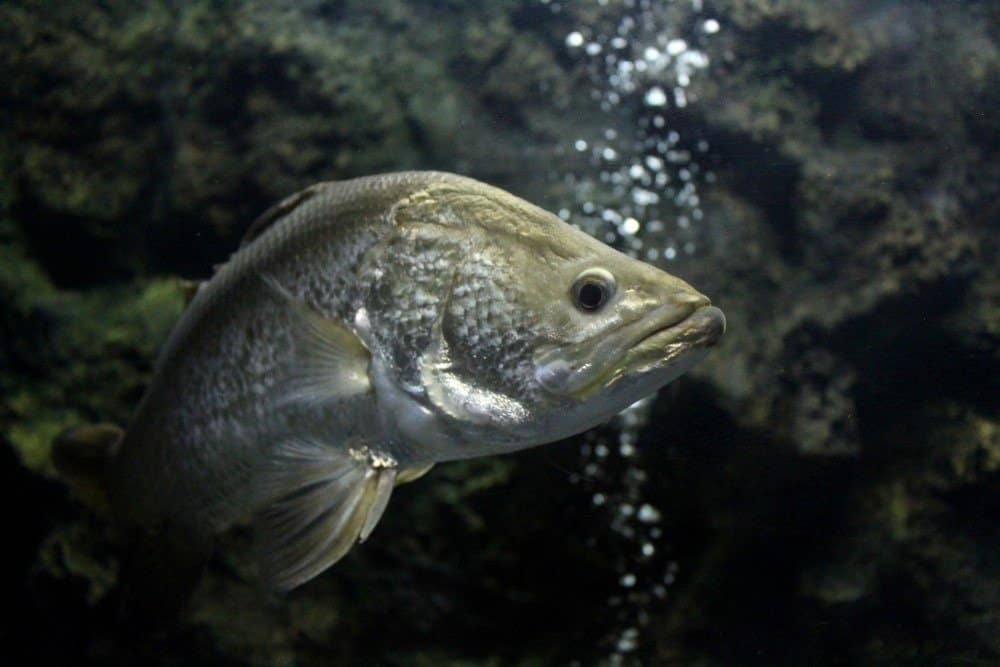
Barramundi (Lates calcarifer) is also known as the Australian seabass or the Asian seabass.
©THAIFINN/Shutterstock.com
2. Giant Danio (Devario aequipinnatus)
These tropical fish can be found in freshwater at elevations above 1,000 feet. Their diet consists of worms, insects, and crustaceans. Even though they have the word “giant” in their name, they only grow up to 6 inches long. Giant danios are blue with yellow stripes and have greyish-clear fins. Because of their vibrant colors, they are popular aquarium fish as well. 85% of the giant danio sold for aquariums from India are caught in the wild. Their range includes Bangladesh but stretches from Pakistan to Cambodia.
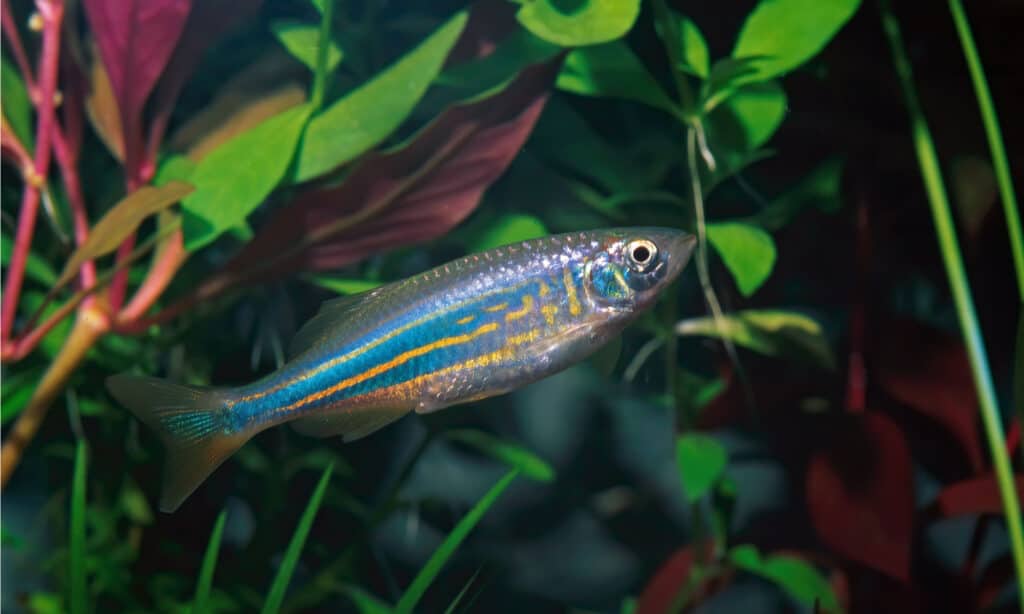
Danios are tropical fish that belong to the minnow family.
©Karel Zahradka/Shutterstock.com
3. Indian Knifefish (Chitala chitala)
This fish may have the country of India in the title, but it is also found in Bangladesh, Nepal, and Pakistan. They are about 30 inches long on average but can reach lengths of up to 48 inches. It is recognizable by its unique curved shape and light stripes on the back.
The Indian knifefish is culturally important to the region for many reasons. First, in Hinduism, it is a symbol of Lord Narayana, which is one of the manifestations of the deity Vishnu. It is also important in cuisine. It is often cooked with different spices and sauces in dishes such as chital maasor jul, chital maccher muitthya, and chital maccher peti.

The Indian knifefish (Chitala chitala) is often confused with the clown knifefish (Chitala ornata). However, the Indian knifefish is not as commonly seen in aquariums.
©Henry Sullivan Thomas / public domain – License
4. Bengal’s Snake-Eel (Pisodonophis boro)
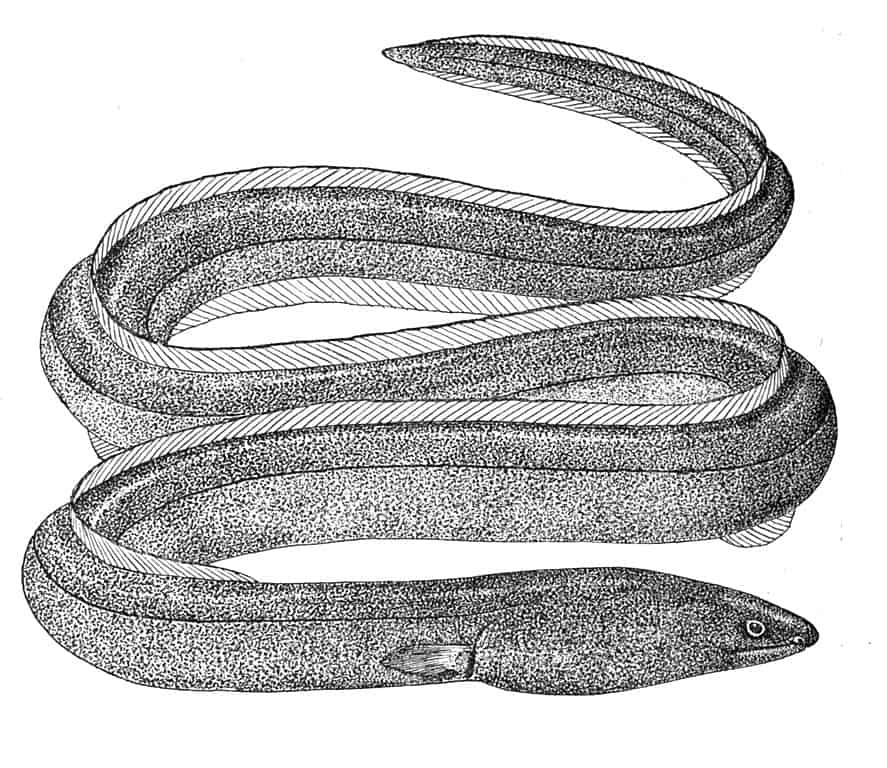
They are popular to catch in bags and sell fresh at the market for food.
©Bleeker / public domain – License
Bengal’s snake-eel is also known as the rice paddy eel because it often spends its spawning time in rice paddies. They can grow up to 40 inches long but are more commonly around 27 inches. They are popular to catch in bags and sell fresh at the market for food. Before spawning in rice paddies, they live in other areas such as estuaries, streams, and rivers. They burrow down into mud and sand during the day and come out at night to feed.
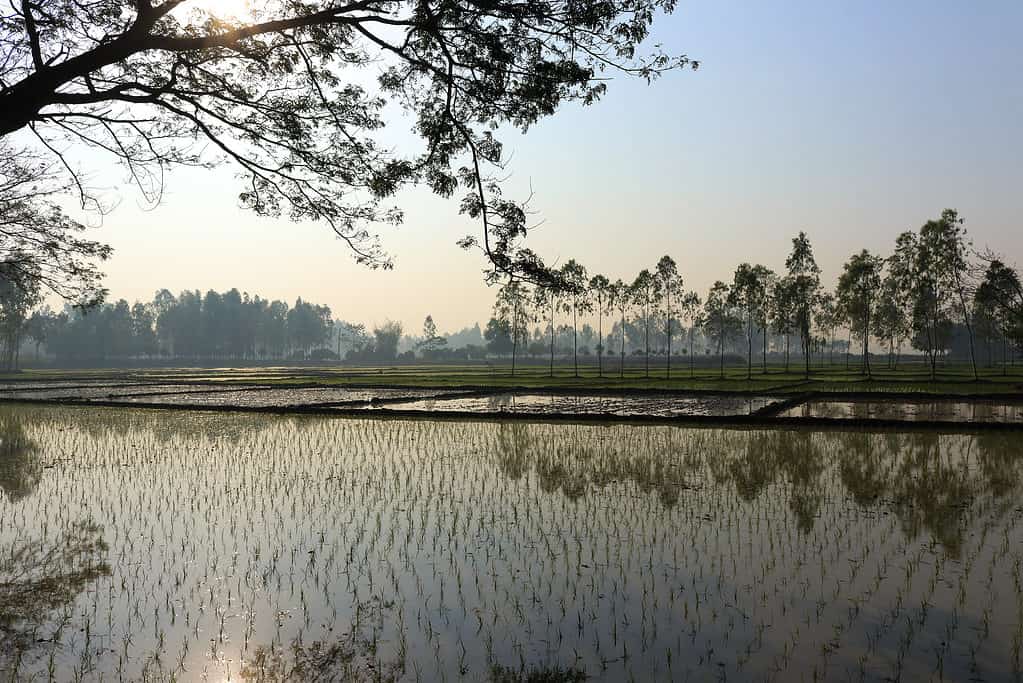
Bengal’s snake-eels are also known as rice paddy eels because they like to live in rice paddies during the rainy season and spawn.
©iStock.com/Trail Sun
5. Swamp Eel (Monopterus albus)
Don’t get confused: another name for the swamp eel is also the rice paddy eel, as it is for the Bengal’s snake-eel. However, this eel is a different species. Swamp eels can grow up to 15 inches long. The swamp eel is important in cuisine wherever it is found, including in Bangladesh. They are native to southeast Asia and have been introduced to the Everglades in Florida and a swamp near Atlanta in Georgia. Most swamp eels are dark brown or green with black flecks. However, those found in Florida may be more colorful.
At least one of the introduced populations of swamp eels in the American South was related to the release of a swamp eel that was being kept as a pet. Experts believe other populations were established by local residents for a reliable source of food. Luckily, after studies done in Everglades National Park, their introduction doesn’t seem to have made any negative effects so far.
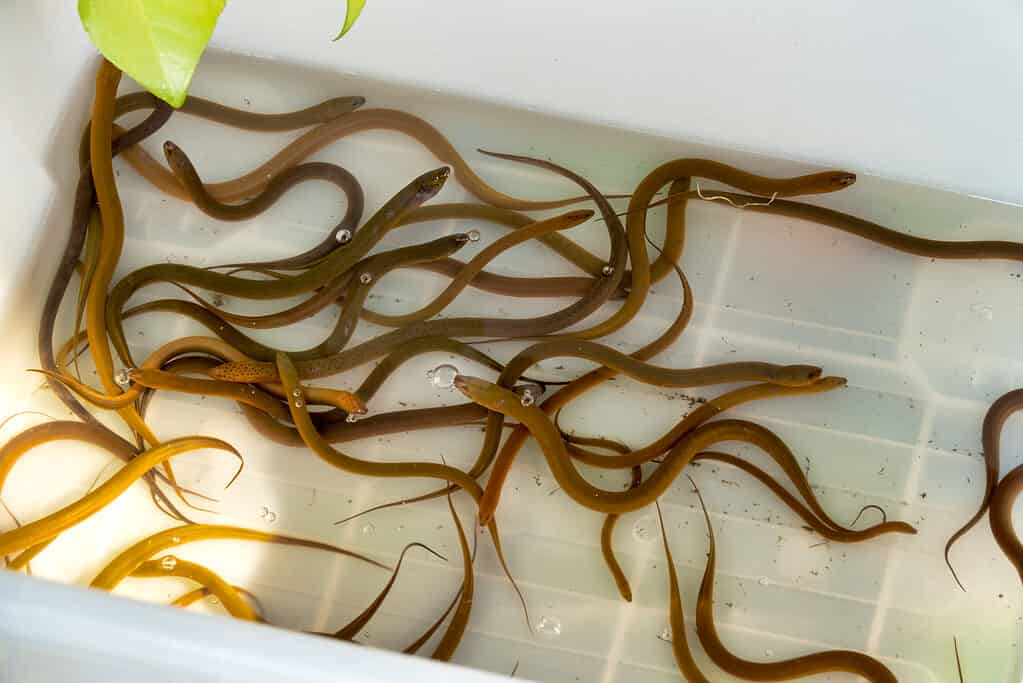
Asian swamp eels are native to southeast Asia but have been introduced into Florida and Georgia in the United States.
©iStock.com/only_fabrizio
6. Rohu (Labeo rohita)
This silver-colored fish can reach a length of 6 feet but is more commonly around 1.5 feet long. They live in rivers throughout southeast Asia including Bangladesh, Pakistan, and India. This fish has been eaten in the region for hundreds of years, if not longer. There is even a recipe for fried rohu in a 12th-century Sanskrit text!
A popular preparation for rohu is macher kalia. In this dish, the fish is paired with potatoes, onions, garlic paste, tomato paste, and spices for a flavorful stew. Because of its popularity in cuisine, it is a popular fish for farming, also known as aquaculture, in the region.
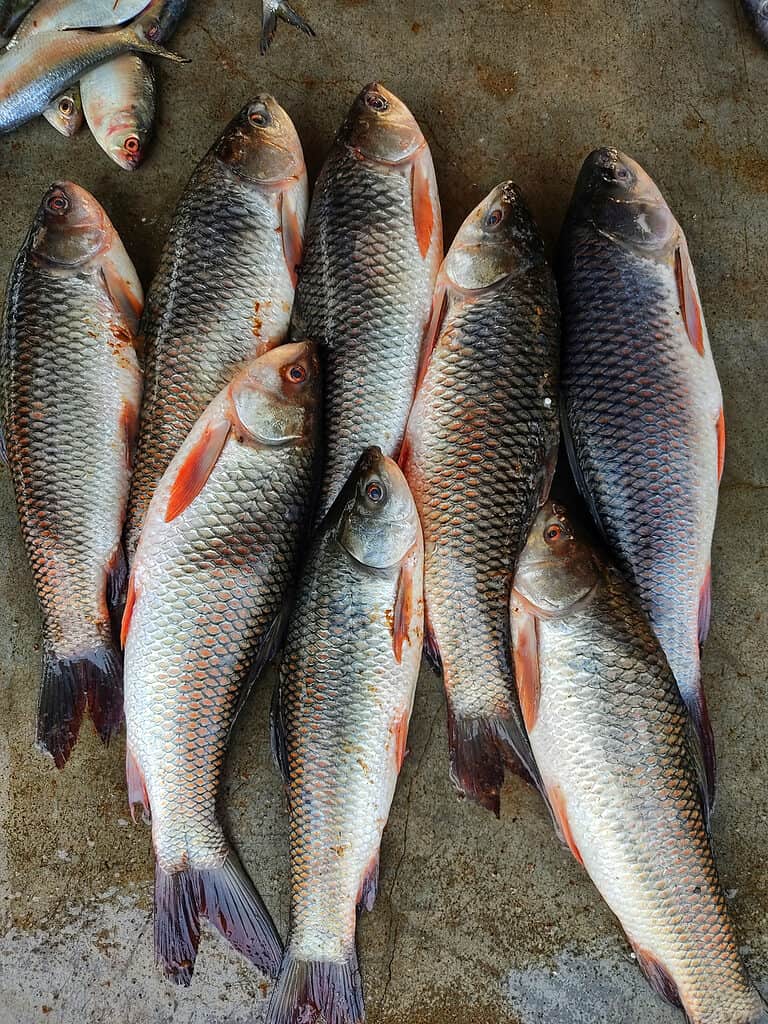
©iStock.com/Biswa1992
7. Hilsa
The hilsa is actually the national fish of Bangladesh as well as the official state fish of the state of West Bengal. More than 85% of the world’s supply of hilsa comes from Bangladesh, and the fish represents 12% of all fish production in the country, as well as 1.15% of the country’s total GDP. So, it is very important! Nearly half a million Bengals are directly employed to catch hilsa. Several million more are employed in relation to hilsa trade and sales.
Other names for the hilsa include ilishi, hilsa herring, and hilsa shad. In other areas of the world, it goes by other names. For example, in Gujarati, the language from the Indian state of Gujarat, it is called modar or palva.
A popular dish to make with hilsa is a type of fish curry, called shorshe ilish in Bengali. The hilsa fish is also deeply embedded in Bengal culture. It is a part of many cultural sayings and is often purchased for special holidays or as gifts.
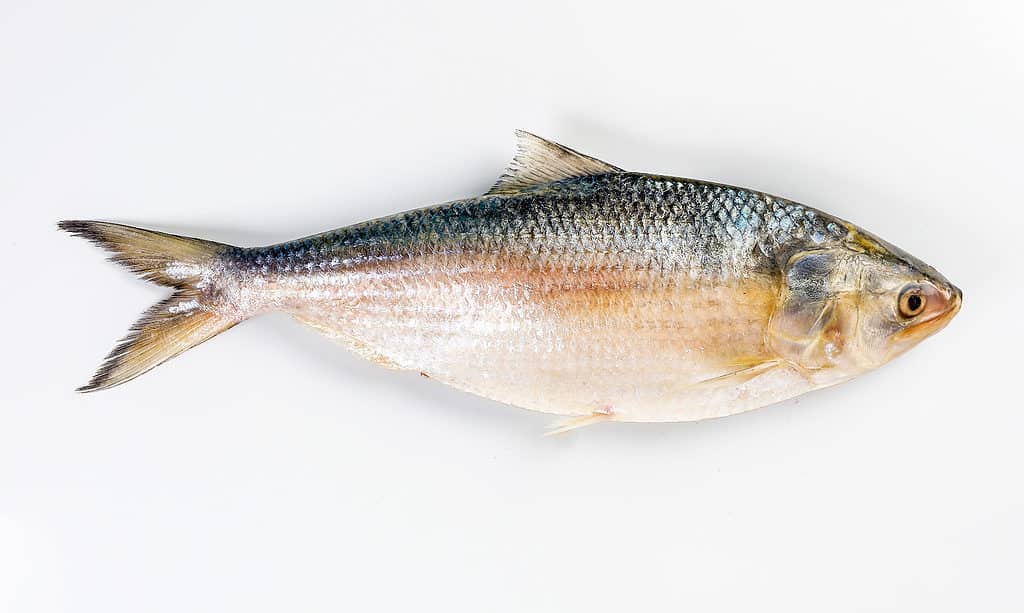
More than 85% of the world’s supply of hilsa comes from Bangladesh.
©Oqbas/Shutterstock.com
Up Next:
- Discover the 9 Largest Cities In Bangladesh
- 10 Incredible Fish Facts
- Biggest in the World? Fishermen Discover a Fish as Big as a Chevy Suburban
- How Big Do Betta Fish Get?
The photo featured at the top of this post is © iStock.com/only_fabrizio
FAQs (Frequently Asked Questions)
What are some fish species found in Bangladesh?
Barramundi, swamp eel, and rohu are some of the fish species found in Bangladesh.
What is the official fish of Bangladesh?
The hilsa is the official fish of Bangladesh.
What is the 8th most populous country in the world?
Bangladesh is the 8th most populous country in the world.
Thank you for reading! Have some feedback for us? Contact the AZ Animals editorial team.







